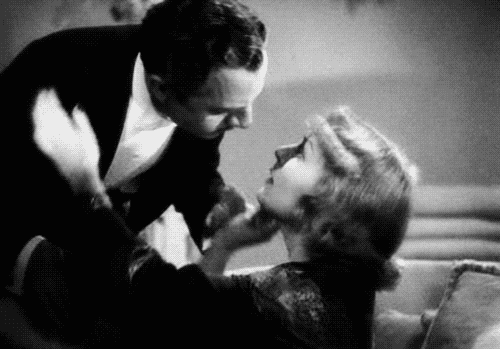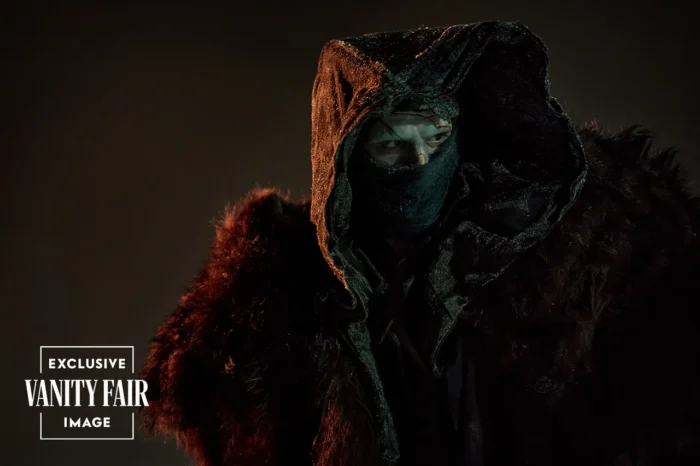
“I have never gone into a picture without first studying my characterization from all angles. I make a study of the fellow’s life and try to learn everything about him, including the conditions under which he came into this world, his parentage, his environment, his social status, and the things in which he is interested. Then I attempt to get his mental attitude as much as possible.” — William Powell
William Powell was a man of such charm, such wit, and yet also such warmth, he seemed to have chemistry with everyone. He had sparks with every single co-star. There’s nothing better than William Powell opposite a woman who gives as good as she gets. Of course there’s all of the films he made with Myrna Loy – 14, I think? – their chemistry is so dreamy, so exhilarating, it’s like you get drunk watching them. But again, he had chemistry with everyone. Jean Harlow. Kay Francis. Carole Lombard. Jean Arthur. Irene Dunne. These are all very different women, women of different types with different energies. He clicked with them ALL. He also had chemistry with inanimate objects. There was an intimacy in his demeanor and this made him highly aware of his surroundings, alert to everything: people, himself, his clothes, his drink and cigarette.
Now why is that? Chemistry like this is ephemeral, fleeting, impossible to manufacture.

I think the key is William Powell legitimately found women delightful. Truly. With no condescending old-fashioned chivalric patriarchal stuff. He just found women interesting and fun. He liked them. There are many many male romantic leads who don’t seem to like women all that much. They may desire them. But they don’t find them interesting and fun. Burt Reynolds got a kick out of women. He loved flirting and bantering. He lit up when women were around. Nothing was more fun for him. It’s no mystery why Burt Reynolds was one of the biggest sex symbols Hollywood has ever seen. Nothing sexier than a funny man who seems to like women. (Note to incels … Also, note to incels: William Powell was not, how you say, classically good-looking, or buff, or sleek. Look at him. But he was SEXY.) William Powell had what Burt Reynolds had. And if you have THAT, then you have chemistry with all kinds of women. You like hanging out with snooty dowagers and young heedless flirts. They’re all interesting to you.
His chemistry could exist in the amoral decadent world of Kay Francis (they were dynamite together) and in the screwball loopy world of Carole Lombard.

He could be so so silly. (The fly fishing scene in Libeled Lady. The entirety of Love Crazy.) He was devastating when he was tender. (Swoon.) He was witty and urbane, immaculate in his tux and tails and top hat and martinis … but he always had a streak of absurdity, he was attuned to it. He seemed to like when a woman got the best of him. It turned him on. This is why his chemistry with Myrna Loy was so dynamite. Here’s a wonderful piece I found about all the films Powell and Loy did together.

Powell said of their work together:
When we did a scene together, we forgot about technique, camera angels, and microphones. We weren’t acting. We were just two people in perfect harmony. Many times I’ve played with an actress who seemed to be separated from me by a plate-glass window; there was no contact at all. But Myrna, unlike some actresses who think only of themselves, has the happy faculty of being able to listen while the other fellow says his lines. She has the give and take of acting that brings out the best.
Powell was involved with two hugely talented – and FUNNY – women who came to early tragic ends: Carole Lombard (whom he married, and divorced) and, before that, Jean Harlow. He was devastated by their deaths, and filled with guilt about poor Harlow, whom he didn’t marry. In 1940, he married again, to Diana Lewis – an actress and contract player. Their marriage lasted until his death in 1984.

“Unfortunately, or perhaps it is fortunate that I have always been forced to stand on my acting ability. I haven’t a personality such as Jack Gilbert’s, for instance, that attracts women and makes them like me for myself. When I am on the screen I must make them forget me entirely and think only of my acting.” — William Powell
I respect his humility and understand what he is saying, but his personality was attractive and he attracted women to him like the proverbial flies. I mean, look at his girlfriends/wives! Wisecracking funny women! It is also true his focus was on his acting ability: he wanted to be known for it. The way he speaks about acting is intelligent and aware. Look at how he describes what set Myrna Loy apart from other actresses: how she listened. I know I go on and on (and on) about the importance of listening – but it really can’t be stressed enough.
Powell was a great listener, a great actor, and VERY attractive. He had it all.
Thank you so much for stopping by. If you like what I do, and if you feel inclined to support my work, here’s a link to my Venmo account. And I’ve launched a Substack, Sheila Variations 2.0, if you’d like to subscribe.







































